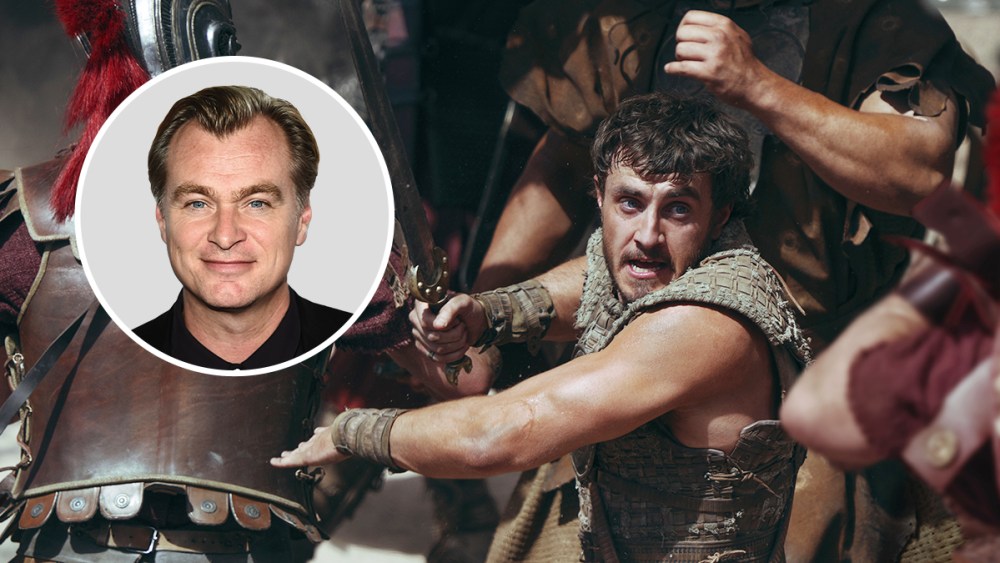As part of Variety’s Directors on Directors series, “Oppenheimer” director Christopher Nolan weighed in on Ridley Scott’s “Gladiator II.”
In Ridley Scott’s first “Gladiator,” Maximus asks us, “Are you not entertained?” and we’re confronted with the truth of why we’d visit the Colosseum through a movie. Scott knows we’re not there for insights into Roman culture; we’re there to see our own dark desires at a comfortable remove. But he’s far too experienced a director to get caught making parallels with our time. He lets the world of “Gladiator II” speak for itself, once again showing us who we are simply by inviting us to enjoy the crazy inflationary ride. Why are there sharks in the Colosseum? Because we demand them, and Scott masterfully gives them to us. As he reveals how the games are used to manipulate public opinion, we can’t help but see shadows of our own public arena projected onto the sand.
Like the best long-awaited sequels, “Gladiator II” must be a remake and sequel in one, and it’s testament to Scott’s brilliance that he manages to balance the individual pathos of the original with the expansionist demands of the sequel’s central theme, bringing a lifetime of experience in controlling tone. Scott raises the game with the staging of his action — his incredible, hyper-observant, multi-camera mise-en-scène (so different to the original) masterfully wrestles the action into clear and jaw-dropping sequence after sequence. The effect is not just to entertain, but to drive us towards awareness of the movie’s themes. Few filmmakers have ever worked so invisibly on multiple levels. In films from “Blade Runner” to “Thelma and Louise” to “Gladiator II,” the visual density of Scott’s art serves as foil for his underlying thematic clarity.
Despite all his success, Scott’s contribution to the evolution of cinematic storytelling has never been properly acknowledged. Visual innovations he and fellow directors from the British adland of the 1970s brought to cinema were often dismissed as superficial, but critics of the time missed the point — the lavish photography and meticulous design brought new depth to the visual language of movies, mise-en-scène that could tell us what the worlds they portrayed might feel like. This has never been as clear as in the masterful opening shot of “Gladiator II,” where Paul Mescal’s hand gently cradles the grain harvested from the original movie’s swaying wheat.













